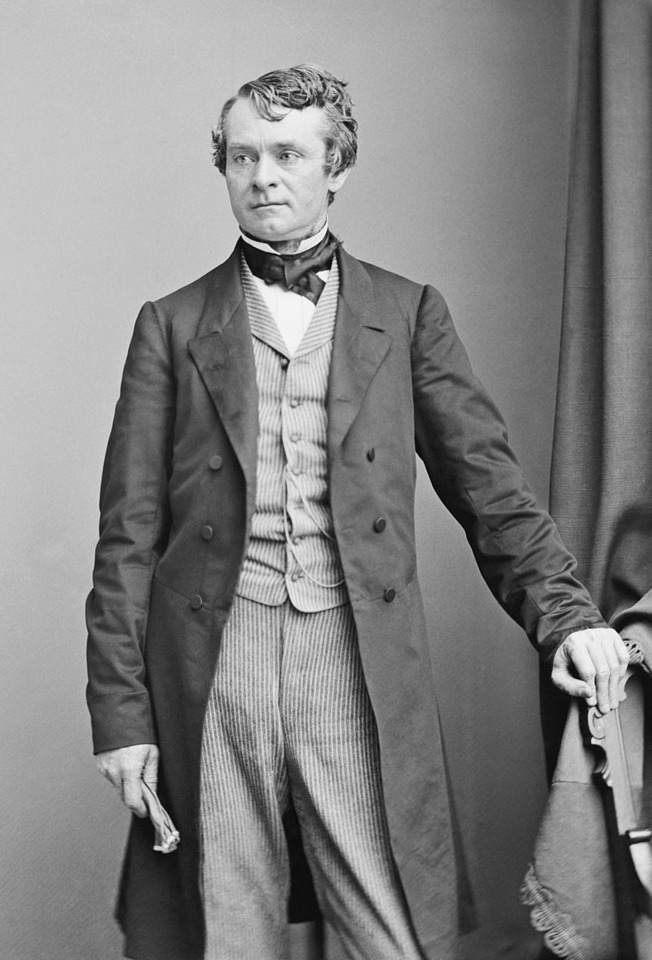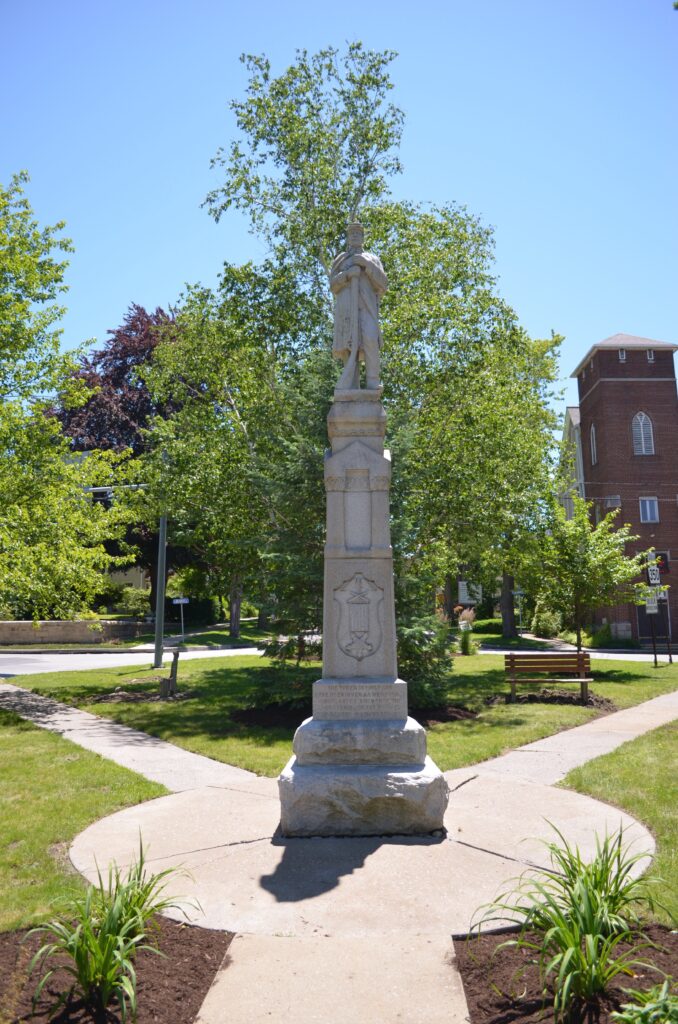Militias played a central role in antebellum Centre County, teaching men military discipline and arms skills to ensure their readiness for war. The volunteer companies also served as fraternal organizations that linked members to the communities.
The first militias in the county were in the mode of a centuries-old militia tradition that English settlers had brought to North America. As a defense force, the militia were viewed as preferable to professional armies. Militia companies formed at the community level were egalitarian and typically elected their own officers, who tended to be men of wealth and standing.
The history of officially recognized voluntary militia companies in Pennsylvania can be traced to 1747, during King George’s War, which was the third of the four French and Indian Wars. To defend the colony from Spanish privateers operating on the Delaware River during that conflict, Pennsylvanians organized volunteer militia companies, known as “Associators.” This name continued into the Revolutionary War when Centre County’s first formal military company, the Ninth Company of the Centre County Associators, was organized in 1775 in Penn’s Valley.

The company consisted of forty-three privates and four officers, including James Potter, who was elected colonel of the company. Potter ordered the construction of a fortified blockhouse in Penn’s Valley, known variously as Potter’s Blockhouse, Upper Fort, or Old Fort.
During the Revolutionary War, the county’s militria periodically attacked local Native American communities and sought to drive them away from the county’s growing White settlements. In 1778, deadly clashes occurred between settlers and Native Americans, allegedly led by Woapalanne, or Bald Eagle, a leader of the Munsee Lenni Lenape, near Williamsport.
Partially in response to these clashes, a military company from Potter’s Blockhouse attacked Native Americans in what is now Centre Hall. In 1780, Samuel Brady, a militiaman and later captain in the Continental Army, led a punitive expedition through central Pennsylvania, including Centre County, launching surprise attacks against unsuspecting Native communities. Such attacks by militiamen were commonplace in the county and throughout Pennsylvania in the late 1700s.
In 1777, Pennsylvania passed its first militia law, which compelled all able-bodied white men between the ages of eighteen and fifty-three to enroll in their local militia and attend all scheduled exercises and musters, or pay a fine for each failure to appear. Monies collected from the fines were to be expended on supplies for the militia companies.
The law preserved local control of militia companies while formalizing the state’s authority to call the companies into service in the state militia. It also established the expectation that companies would muster regularly for inspection and drill to ensure their readiness in case of war.
After the Revolutionary War, most states gradually moved away from compulsory militia service. In many communities, including those in Centre County, official militias gave way to volunteer military companies. These companies still were subject to state service, but they determined their own membership (excluding Black citizens and, sometimes, immigrants); could recruit members from beyond their local community; and elected their own officers. In many communities, these volunteer companies trained with or replaced the local militia.
Between the War of 1812 and the Civil War, volunteer military companies served primarily as fraternal organizations. They often aligned themselves with political parties or social reform movements. The Bellefonte Grays, a volunteer infantry company, promoted temperance and were outspoken supporters of the Democratic Party and President Andrew Jackson in the 1830s.
As fraternal organizations selective in their membership, volunteer military companies reflected political and class divisions in American society. When the Centre Guards infantry company was founded in Bellefonte in 1824, it led to the formation of a rival military company by men who were unhappy with the results of the election of officers in the Centre Guards.

The founders of the Farmers’ and Mechanics’ Infantry Company complained that the Centre Guards were dominated by “gentlemen or those who please to call themselves so.” The Farmers’ and Mechanics’ Infantry Company espoused a more egalitarian ethos where social and economic status was no barrier to leadership.
Most volunteer military companies, however, were led by elites from the community. They wanted to serve as officers to demonstrate their capacity for leadership and reinforce their status in the community. In some cases, their service as officers fueled their aspirations for political office. Prior to his election as governor of Pennsylvania on the Republican ticket in 1860, Andrew G. Curtin captained the Centre Guards for many years and was the founding captain of the Bellefonte Fencibles in 1858.
The county’s volunteer military companies typically mustered and executed rudimentary drills during important community events and holidays, notably Independence Day. They assumed a prominent place in communal celebrations, hosting and attending picnics, balls, and banquets. They also participated in annual county-wide encampments that were equal parts military exercise and social activity. At the September 1858 encampment at Camp Logan outside of Bellefonte, 5,000 people came to see 800 members of the county’s various voluntary military companies parade and drill.
The 1858 encampment might have been the largest in Centre County’s history. As sectional tensions over slavery increased during the 1850s, voluntary military companies multiplied throughout the country, including in central Pennsylvania. Five cavalry and ten infantry and artillery companies participated in the 1858 encampment, including companies from Bellefonte, Brush Valley (Indiana County), Boalsburg, Centre Hall, Gatesburg, Lock Haven (Clinton County), Penn’s Valley, and Warrior’s Mark (Huntingdon County).
On the eve of the Civil War, the county’s military companies consisted of hundreds of young men. Their experience in these companies gave them a rudimentary understanding of military discipline and skills at arms and linked them with their communities in their patriotic fervor to defend home and country in the conflict to come.
After the war, the organizational structure of military companies was no longer efficient. By 1878, the remaining companies were organized into what was called the National Guard of Pennsylvania. The units were organized into one division that consisted of five brigades, with companies lettered “A” to “M.”
In 1890, Bellefonte’s company became Company B, 5th Infantry Regiment, 47th Brigade of the Pennsylvania National Guard. In 1894, an armory to house Company B was dedicated at the corner of Lamb and Spring streets in Bellefonte.
The militia system that began during the colonial era ended in 1903 when the federal Efficiency in Militia Act made the national guards of Pennsylvania and other states subordinate to the U.S. Army. New legislation established the modern Army National Guard. The Pennsylvania National Guard is a reserve component of the U.S. Army and augments it in times of national emergency or war. When not on federal duty, the Pennsylvania National Guard is under the command of the governor.
Matt Isham
Sources:
Fox, Francis. S. “Pennsylvania’s Revolutionary Militia Law: The Statute that Transformed the State,” Pennsylvania History: A Journal of Mid-Atlantic Studies. Vol. 80, No. 2 (Spring 2013): 204-214.
Linn, John Blair. History of Centre and Clinton Counties, Pennsylvania. Philadelphia: L. H. Everts, 1883.
Reinders, Robert. “Militia and Public Order in Nineteenth-Century America,” Journal of American Studies. Vol. 11 No. 1 (April 1977): 81-101.
Seymour, Joseph. The Pennsylvania Associators, 1747-1777. Yardley, Pa: Westholme Publishers, 2012.
Sipe, Chester Hale. The Indian Wars of Pennsylvania. Harrisburg, Pa: Telegraph Press, 1929.
First Published: August 29, 2021
Last Modified: March 3, 2025
